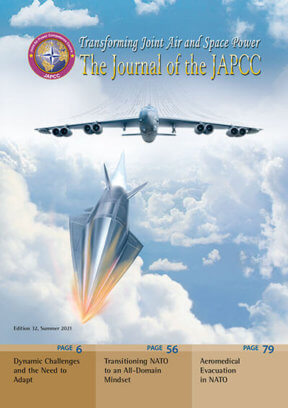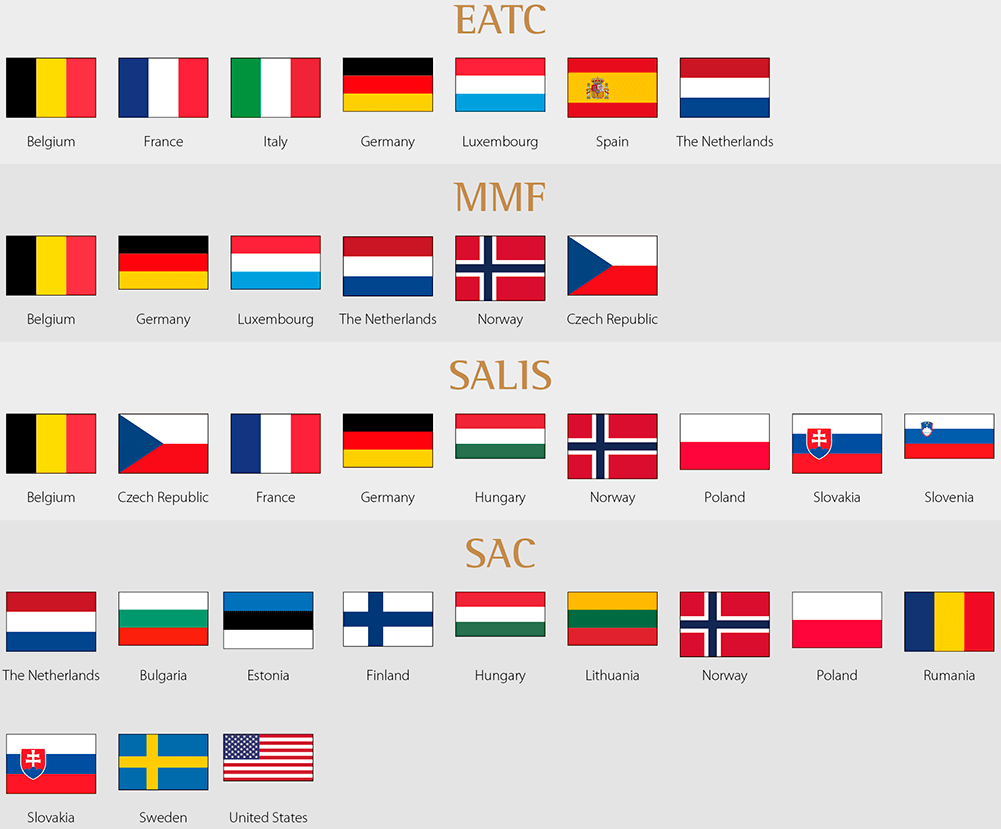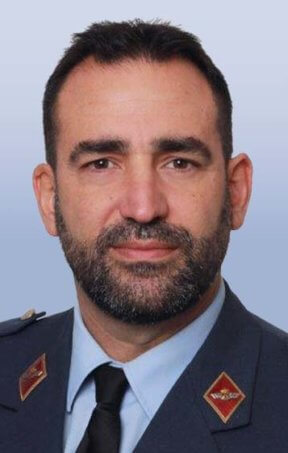‘Competition has been shown to be useful up to a certain point and no further, but cooperation, which is the thing we must strive for today, begins where competition leaves off.’1
Franklin D. Roosevelt
Introduction
During the Cold War, strategic Air Transport (AT) did not play such an important role among the priorities of European countries because of its static geography. With the fall of the Berlin Wall and after the progressive development of the EU, the AT capabilities of European countries were put to the test in their participation in missions in Afghanistan under the NATO flag after the attacks of 9/11 in 2001.
The shortcomings of AT in Europe were obvious following 9/11, as the Member States (MS) of the EU had to resort to initiatives as the Strategic Airlift International Solution (SALIS) or the Strategic Airlift Capability (SAC).
Further, and more recently, when referring to Air-to-Air Refuelling (AAR)2, these shortcomings were seen in the allied air operations in Kosovo, Libya and Mali, in which some members of the EU had to call upon and rely again on US refuelling aircraft.
Simply stated, the EU identified major gaps, over a number of deployments, among the capabilities required to successfully carry out those military operations to include strategic AAR, AT and Aeromedical Evacuations (AE).
‘Less than 3 % of European troops (40,000) are deployed due to shortcomings in the field of interoperability and a shortage of equipment. This figure contrasts with the 200,000 US troops deployed abroad.’3
Traditionally, strategic AT capacity to carry out EU missions has always been based on the contributions of EU Member States, revealing gaps and delays in the process of generating forces to carry out missions under either their own EU flag or when integrated into NATO missions.
Until recently, EU MS acquired their aircraft or developed their capabilities based on national requirements. The acquisition of the A400M and the A330 MRTT are an intermediate step, signifying an advance towards the alignment of national, EU and NATO objectives.
In the current context of economic crisis, the concepts of pooling, sharing and smart defence, through air cooperation models, allow some of the nations to maintain a set of capabilities or to develop new ones which they could not do on their own, based on their resources.
Considering that less than 60 % of European AAR end-users (receiver countries) operate their own AAR strategic aircraft, the Multinational Multi-Role Tanker Transport Fleet (MMF) represents an innovative and cost-effective solution, in order to help its members meet their requirements, not only for AAR but also for AT and AE capabilities, and join the EU or NATO missions.
The Programme
The MMF is an international NATO air cooperation programme based on the acquisition, management, and operation of a fleet of Airbus 330-200 Multi-Role Tanker Transport (MRTT) aircraft.
The programme was launched in 2016 with the signing of the Memorandum of Understanding (MOU) between the Netherlands and Luxembourg. Other European States joined in the following years, including Belgium, Germany, Norway, and the Czech Republic.4
Its creation responds to the need to renew or to cover the lack of strategic airlift capabilities existing at the European level, in particular the capabilities5 of AAR, AE and AT of passengers and material at an inter-theatre level.
During the initial phase, nine A330-200 MRTT aircraft, with the possibility of expansion to eleven, were acquired by the ‘Organisation Conjointe de Coopération en matière d‘Armement’ (OCCAR), on behalf of NATO and under the auspicious of the NATO Support and Procurement Agency (NSPA).
The operation of the nine MRTT aircraft is carried out from the Multinational MRTT Unit (MMU) from two airbases. The Main Operating Base (MOB) in Eindhoven, The Netherlands, will operate five aircraft. Four aircraft will operate from the second airbase, which is a Forward Operating Base+ (FOB+), located in Cologne, Germany.
The projects related to the infrastructure of the MOB and FOB+ have been completed. Three crews received initial training at Airbus facilities in Seville and continue to train while operating from Eindhoven.6
The programme members operate the aircraft, but these are owned by NATO. The economic participation of each country resulted in a proportional amount of flight hours, which according to the current MOU, is 9,900 annual flight hours in total. The only contribution of the member nations not covered through economic payment is the apportionment of personnel from each nation to the MMU.
One example of the great benefit of the MMF is the participation of the Czech Republic. With a minor economic participation, equivalent to 100 flight hours, it has access to the full spectrum of capabilities of the MRTT fleet.
Another huge benefit of the MMF‘s structure is that it allows any member nation to sell part of their flight hours to countries outside of the programme. This fact allows not only ‘burden sharing’ of this type of strategic support system, but also provides access to its capabilities to all NATO and EU countries, with greater flexibility.
Having already completed the first training missions, MMU‘s Initial Operational Capability (IOC) is expected before the end of 2021 and Final Operational Capability (FOC) in 2024.
© JAPCC
The MMF Among the European Airlift Cooperation Models
As an international military cooperation programme, the roots of the MMF lie in the concepts of pooling, sharing and smart defence. There are three similar cooperation programmes based in Europe with ownership or authority over military airlift assets:
- the European Air Transport Command (EATC);
- the Strategic Airlift International Solution (SALIS);
- the Strategic Airlift Capability (SAC).
The EATC is a multinational Operational Command that exercises Operational Control over a large part of the military transport aircraft of its seven participating nations7, in order to optimize their use as they are considered a critical means. This fleet represents more than 70 % of the EU airlift assets, with the Airbus 400M constituting the backbone of the fleet. The aircraft are always operated by the air units of the participating nations. These air units are referred to as executing agencies within the EATC. In this sense, MMU operates under the umbrella of the EATC as another executing agency, with the peculiarity that is a multinational unit in itself.
The MMU main contribution towards the EATC is its strategic component, which cannot be covered with the A400M alone, especially in the field of AAR.
On a daily basis, the EATC, which is co-located in Eindhoven, will provide the planning, tasking, and mission control of this MRTT fleet.8 To do this, in due time, the EATC Commander will receive the Operational Control of the MRTT aircraft, which is currently being exercised by the MMU Commander.
Same as the EATC participating nations, the MMU Commander can always revoke the transfer of authority of its aircraft given to the EATC.
SALIS was established in 2004 as a multinational consortium. Its MOU was signed in 2004 considering the ‘Berlin Plus’ Security Agreements between NATO and the EU. In this agreement, NATO was supporting the planning and execution of EU-led Crisis Management Operations, allowing the EU to draw on some of NATO‘s military assets.
Currently, the SALIS programme is managed by the NSPA on behalf of nine NATO European Allies.9 The contract with the civil company Antonov Logistic SALIS (ALS) allows access within a few days to five Antonov An-124-100 type aircraft and secondary to AN-22, AN-225 and IL-76, subject to availability. The consortium countries have committed to use 1,600 flight hours per year.
Until 2016, the ‘I’ of the SALIS acronym stood for ‘Interim’ instead of ‘International’. This term ‘Interim’ referred to the fact that this initiative was designed to fill the NATO-EU transport gaps10 until new A400M aircraft or other airlift strategic options, as the MRTT, could be deployed around 2025.
The main advantage of this programme is the huge cargo transport capacity, including a great variety of oversized material. An AN-124-100 can carry up to 122 tons of cargo with a range of 5,250 km. In comparison the MRTT can only carry up to 40 tons and is not prepared for oversized material. MRTT having neither a cargo ramp nor an adequately prepared cargo bay will never replace the Antonovs of the SALIS programme.
The SAC programme was created in 2008 and presents more similarities with the MMF. When creating the MMF programme, The Netherlands and Luxembourg followed similar patterns to the SAC NATO air cooperation model.11
In both programmes, the NSPA manages and coordinates on behalf of the nations and provides global logistics support to the fleet throughout the whole life cycle of the systems. This includes maintenance services, material management, infrastructure, Information Communications and Technology (ICT) and general support.
When comparing the two NATO programmes grounded in Europe, there are two main differences. The first is that the United States (US) is the leading nation of the SAC, while The Netherlands is leading the all-European MMU. The second difference consists of the size of the fleet and the capabilities provided by their respective aircraft.
The strength of the SAC programme lies in the 72.6 tons cargo transport capability of its three C-17 ‘Globemaster’. The C-17 is able to transport palletized oversized cargo, as well as land vehicles or helicopters, and land on small unpaved runways or deliver by airdrop. The C-17 can also be specially configured with airline-style seating pallets to transport up to 188 troops,
Comparatively, the MMFs A330 MRTT passenger transport capacity and comfort are higher with up to 267 seats in its basic configuration, with simultaneously 40 tons of load in the cargo lower deck compartment. But the aircraft is not prepared for loading oversized material nor landing on unpaved runways.
In fact, it is the MRTT’s AAR capability, with its state-of-the-art Boom and Hose and Drogue systems, which contributes to the programme‘s main strategic relevance.12 The aircraft’s 111-ton (245,000 lb) fuel capacity enables the MRTT to perform AAR missions without any additional fuel tanks and without the need for reconfiguration to accommodate probe or receptacle receivers, making it compatible with the AT and AE missions, highlighting its true Multi-Role capability. This interesting feature could be used concurrently during the deployment, redeployment and sustainment of many international EU or NATO missions, as well as combining AAR training with other AT missions. The Operational Control of the MRTT aircraft by the EATC is a key advantage to manage the required multinational planning and interoperability.
Contrasted to the US Tanker fleet, with more than 400 KC135s and 179 KC-46A ‘Pegasus’ foreseen for 2027, the MMFs fleet of MRTTs may seem like a small collaborative regional cluster.
However, the entire strategic AAR fleet of the 27 MS of the EU, before the development of the MMF initiative, did not reach 25 aircraft and was concentrated in five countries (France, Germany, Italy, The Netherlands and Spain). Therefore, the MMF, adding up to eleven new aircraft represents a major quantitative and qualitative leap forward.
MMF Capabilities Available to Partner Countries
While the centre of gravity of US interests moves towards the Pacific region, that of the EU oscillates between the North Africa-Sahel area and the containment of Russian territorial ambitions. Consequently, the US shift of focus necessitates that Europe strengthen its position as an international defence partner and take a relevant role in the management of its own borders.
The EU is progressively becoming a stronger global actor that reinforces the projection of its Common Security and Defence Policy beyond its borders.13 As a result, in the last decade, the MS of the EU have repeatedly projected their power by using airlift assets, not only under NATO but also under the EU flag. In fact it was the European Defence Agency (EDA) of the EU, who picked up the European deficiency of AT capabilities, and promoted the initiative of the MMF which still it supports today.14
The MMF possesses the AT capabilities that, once available to the EU, could increase its autonomy and its reaction capacity, thus favouring the EU strategic partnership with NATO. The operational MMF will help the EU to deploy its Battle Groups, the Eurocorps, the troops and capabilities associated with the new EUFOR Crisis Response Force (CROC) and support NATO deployment of the NATO Reaction Forces (NRF) and Very High Readiness Joint Task Force (VJTF).
As a result, it is expected that, in the near future, an interaction among the MMF Programme and EU organizations as the Military Planning and Conduct Capability (MPCC) or the European Union Military Staff (EUMS) will materialize. This interaction is already visible through the new agreement signed between the MPCC and the EATC concerning the cooperation in the area of AE, which also impact on the MMU.15
Conclusion and Way Ahead
The AT capabilities of the MMF should be considered a key factor (key enabler) to enhance the missions of European allied states within the EU and NATO framework. They will allow third-party European nations that do not have their own means of strategic AT and AAR capability to mobilize and deploy their troops and fighter aircraft in support of NATO and EU missions.
Furthermore, MMF enables the European states to partially reduce the reliance upon US strategic assets.
The strong point of the strategic capabilities of the MRTT are AAR, AE and passenger transport, adding the Multi-Role capability itself without the need to reconfigure the aircraft. This feature can be optimized thanks to the cooperation between the EATC and the MMU.
The cargo transport of oversized material is a capability shortfall of the programme. Strategic cargo transport missions will continue to depend on SALIS, SAC, civilian assets and/or the US Air Force.
The way ahead for the MMF Programme envisions a tight cooperation between the MMU and other MRTT operators such as France, or maybe Spain, in the future. The cooperation with France has recently started in the fields of spare parts acquisitions, maintenance, training, and use of standard operating procedures.
However, it would be desirable, and it is maybe foreseeable that more countries would join the MMF programme. Sweden and Finland could become members promoting the creation of a new northern European FOB that would eventually cooperate in the Baltic Air Policing (BAP) Mission.













